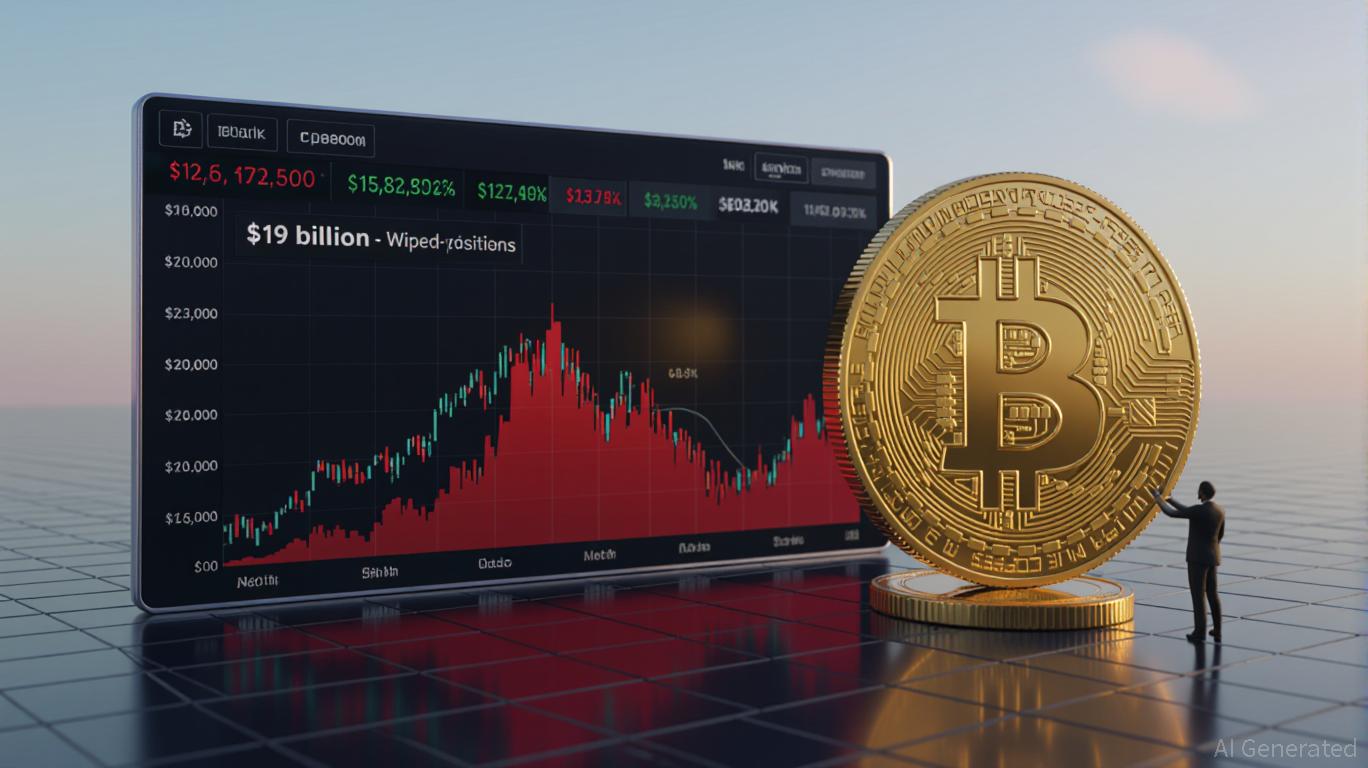COAI Price Reduction and Its Impact on Clean Energy Markets
- COAI Index's 88% November 2025 drop exposed crypto AI and clean energy market vulnerabilities, triggered by C3.ai's leadership crisis and $116.8M Q1 loss. - Regulatory ambiguity from the CLARITY Act and corporate governance failures forced capital flight to stable AI infrastructure stocks like Celestica (5.78% weekly gain). - U.S. clean energy investment fell 36% in H1 2025 due to policy uncertainty, contrasting with Europe's $30B offshore wind surge amid Trump-era fossil fuel/nuclear shifts. - CCUS, blu
Corporate Errors and Regulatory Ambiguity: Drivers Behind COAI's Fall
The sharp decline in the COAI Index was the result of a combination of poor corporate governance and uncertain regulatory conditions. Instability in C3.ai's leadership and ongoing legal disputes, such as a class-action lawsuit, shook investor trust,
While the crypto AI industry struggled, the agentic AI sector, with leaders such as SoundHound AI,
Clean Energy Markets: Policy Changes and Shifting Investment Patterns
The impact of the COAI Index's fall on clean energy markets is twofold. Firstly, it mirrors a larger movement of capital away from speculative investments toward more stable sectors. Secondly, it highlights how policy adjustments in the U.S., particularly under the Trump administration, are influencing investment strategies.
Promising Subsectors: Opportunities for Clean Energy Investment
Despite the slowdown in the U.S., certain areas within cleantech continue to attract interest. Technologies related to carbon capture, utilization, and storage (CCUS), as well as hydrogen—especially blue hydrogen—are

Strategic Adjustments: Managing Instability and Policy Challenges
The COAI Index’s sharp decline serves as a warning for investors about the dangers of heavy exposure to speculative markets and the necessity of aligning with policy trends. While some clean energy segments remain robust, the sector as a whole is still susceptible to sudden regulatory shifts. Redirecting investments toward areas with clear policy support—such as CCUS, hydrogen, and nuclear—can help reduce risk and tap into long-term growth.
In addition,
Conclusion: Embracing Practicality in a Changing Environment
The COAI Index’s dramatic fall reflects larger market dynamics: corporate mismanagement, unclear regulations, and the ongoing quest for stability. For clean energy sectors, the way forward is through practical strategies—focusing on areas aligned with policy while guarding against geopolitical and regulatory uncertainties. As shown by the agentic AI sector, innovation and expansion are achievable even in turbulent times. However, success will depend on disciplined investment decisions and a careful watch on the evolving relationship between technology, policy, and market sentiment.
Disclaimer: The content of this article solely reflects the author's opinion and does not represent the platform in any capacity. This article is not intended to serve as a reference for making investment decisions.
You may also like
Bolivia eyes crypto and stablecoins to fight inflation and US dollar shortage

COTI and Houdini Swap Integrate Privacy and Regulatory Compliance to Support Institutional Blockchain Integration
- COTI partners with Houdini Swap to enable confidential cross-chain swaps, preserving user privacy while maintaining regulatory compliance for institutional adoption. - The integration uses non-custodial architecture and split-transaction routing to obscure sender-receiver links while allowing KYT checks on regulated exchanges. - COTI's Garbled Circuits infrastructure supports enterprise-grade privacy, enabling full lifecycle compliance from asset swaps to DeFi interactions without data exposure. - With $

XRP News Update: XRP ETF Momentum and Institutional Interest Face Off Against Technical Challenges in $15.5 Trillion Pursuit
- XRP gains traction via spot ETF approvals and institutional adoption, unlocking a $15.5T market potential as Ripple expands into prime brokerage and cross-border payments. - SEC-approved ETFs from Bitwise, 21Shares, and Grayscale attract $645M in AUM, offering investors regulated access to XRP with fees ranging from 0.34% to 1.89%. - Ripple's $1.25B acquisition of Hidden Road (Ripple Prime) enhances XRP's utility as collateral for $3T in annual settlements, boosting institutional liquidity and adoption.
Bitcoin Leverage Liquidations: Potential Impact on Institutional Involvement in 2025
- 2025 crypto market saw $19B in Bitcoin liquidations after October 10 crash, slashing prices from $126k to $82k amid 70% long-position collapses. - 1,001:1 leverage ratios and 78% perpetual futures dominance created self-reinforcing sell-offs, exposing systemic risks in hyper-leveraged derivatives. - Fed rate hikes and the GENIUS Act's stablecoin rules intensified volatility, forcing institutions to adopt AIFM risk models and RWA diversification. - Post-crisis reforms show $73.59B in crypto-collateralized
